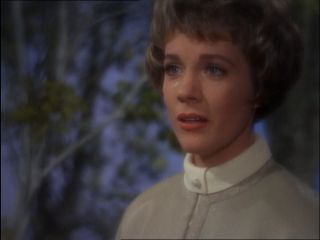The MacGuffin: News and Comment (08/Mar/2008)
(c) Ken Mogg (2008)
March 8
At the end of last week's "Editor's Week", I compared a moment in The Lady Vanishes with a moment in The 39 Steps. Both moments show a character suddenly finding out that his/her doubt about a would-be partner has been needless. In both cases, Hitchcock has separated the two characters for the moment of discovery, then brought them back together. The general principle here has many applications, and indeed Hitchcock once remarked (to Truffaut, I think), 'You can save a lot of time by getting away from something'. He meant, for example, that in order to avoid wordy explanation, often an effective procedure is to cut forward in time and let the audience infer the 'missing' details. Or an 'insert' detail (such as destination labels on suitcases) may imply a whole period of elapsed time (a honeymoon abroad, for instance). But let's come back to the moment in The 39 Steps. When Pamela returns to the bedroom, where Hannay is still asleep, a new romantic aspect to their relationship is signalled by the music that now starts up. Pamela settles herself uncomfortably on a narrow sofa to spend the rest of the night (after taking the blanket that has been covering Hannay!) but it's as if the pair were properly sleeping together at last, if you follow me. There's a variant on this scene in Torn Curtain (1966): the infamous, stagey-looking 'hillock' scene. Professor Michael Armstrong and Sarah are engaged, but on a trip to East Germany he has seemingly betrayed his country by offering nuclear secrets to the Communists. Prior to the scene in question, Hitchcock, instead of first separating the pair spatially, has simply separated them emotionally, leading to the moment at Leipzig University where a distraught Sarah has refused to tell a faculty committee about her work with Michael. Whereupon, Michael accompanies her outside the lecture theatre and up a grassy hillock, away from their Communist 'minders' (who effectively correspond to the foreign agents in The 39 Steps). Now Sarah learns the truth about Michael - from Michael himself - that he is actually working for the American government (but for security reasons hasn't even told his fiancée). Here the camera itself figuratively brings the couple together, by suddenly moving from long-shot into a sweeping close-up of Sarah's relieved, tear-stained face (see frame-capture below). As in The 39 Steps, the film's romantic music starts up, and again it's as if the couple had just made love, or were ready to do so (the sweeping, circling camera recalls typical Hitchcock kissing scenes in, for example, Notorious, Vertigo, and North by Northwest). Even before The 39 Steps, in Rich and Strange (1932), Hitchcock had used the getting-away-from-something principle in a different way, to bring out an emotional change in two people. On a cruise to the East Indies, Emily has a brief shipboard affair with Colonel Gordon (while her husband, Fred, is meanwhile having a shipboard affair of his own, with the woman known as The Princess). To signify the moment when their affair becomes serious, Hitchcock shows Emily and Gordon slipping away to an out-of-bounds part of the ship, at the stern. To get there, they must step over some ship's tackle lying on the deck, and we sense that they are doing something faintly 'illicit' by passing this point. (Romantic music is here provided 'diagetically' by an accordian we see being played by a seaman in the crew's quarters). Arriving at the stern, and realising that things have changed emotionally for them, Gordon looks back at the main part of the ship, and comments to Emily: 'Like to see a ship where we were once passengers?' But of course what I have called the getting-away-from-something principle is also used by Hitchcock on a much larger scale. I mean, for example, that in many of his films he separates two people for a considerable period of time, only to bring them (back) together in an emotionally satisfying climax or finale. Rich and Strange is itself such a film, re-uniting husband Fred and wife Emily in the last part of the film as they go through the ordeal of shipwreck together. Rich and Strange is a form of 'remarriage comedy' (like also Hitchcock's Mr and Mrs Smith) in which a 'gap' or 'gulf' between two people (signifying an absence) is finally overcome. The 'something' that has been got away from here is happy marriage, which is thereby posited as valuable without words being spoken about it. So again we have been talking about Hitchcock's flair for 'pure cinema'.
This material is copyright of Ken Mogg and the Hitchcock Scholars/'MacGuffin' website (home page) and is archived with the permission of the copyright holder. |

